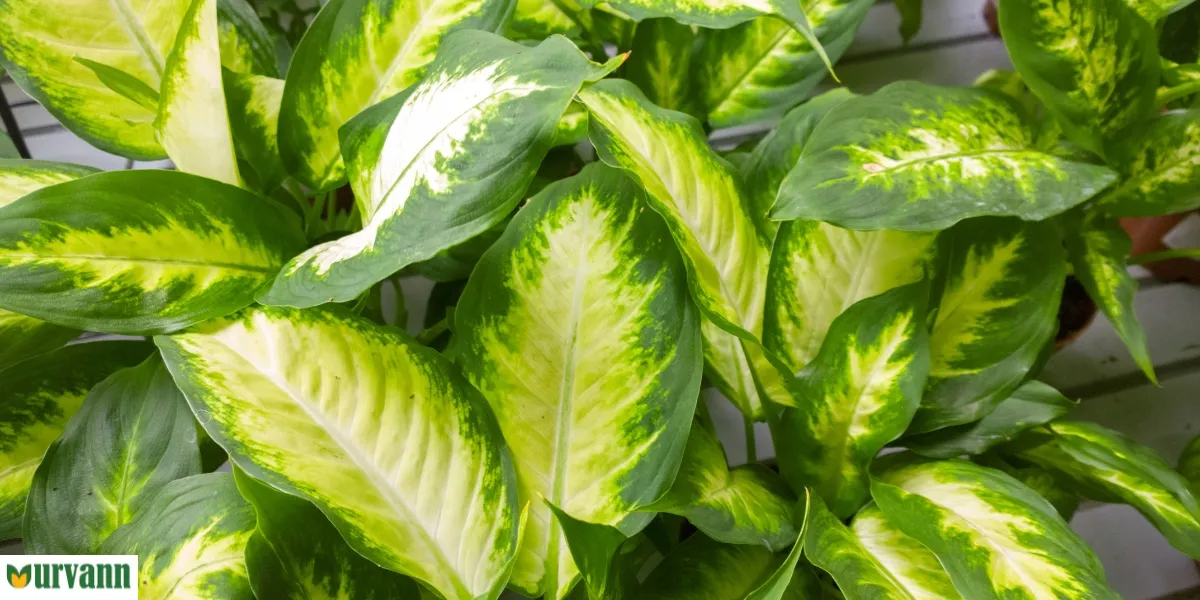If you are looking for a tropical plant to spruce up your indoor garden, look no further than the beautiful Dieffenbachia plant, also known as ‘Dumb Cane’ or ‘Leopard Lily’. With its large, ovate leaves and bright green waxy leaves, seemingly painted with brushstrokes of cream and yellow, the plant looks unique and elegant. The plant got its name from HW Scott, director of the botanical gardens in Vienna, who named it after his head gardener, Joseph Dieffenbach, to honour him.
The plant is native to tropical regions of Mexico and the West Indies, but because it is widely cultivated as an ornamental plant, it has become naturalised globally.
.
How To Recognise Dieffenbachia?
The tropical plant is easily distinguishable from other indoor plants with its unique features and structure. Dieffenbachia has large leaves, as broad as the palm of your hand, oval or lance-shaped (like a sword), and a glossy texture. Different varieties of plants display different leaf shapes, some having a pointed tip while others are rounded. The plant grows upright with a thick, cane-like stem on which leaves grow alternately, creating a dense, lush foliage display.
.
Types Of Dieffenbachia
Dieffenbachia is a super popular houseplant with many stunning varieties that make indoor spaces look gorgeous and attractive. Let us discuss a few varieties of the Dieffenbachia plant to help you identify this beautiful plant.
-
Dieffenbachia Senguine
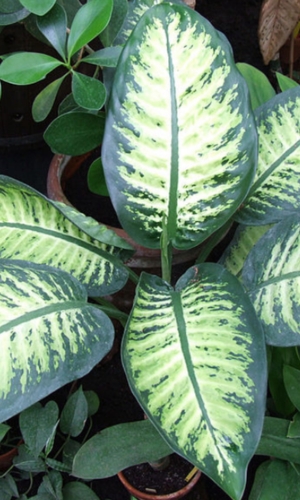
One of the most common varieties of Dieffenbachia is the one you might be most familiar with. It is easily recognisable by its broad leaves, which can reach up to 12 inches in length and are a bright green shade with a visible midrib, from which creamy white brushstrokes emerge in an outward motion. The Dieffenbachia Senguine, also known as the ‘Tropic Snow’ plant, looks gorgeous as it sits, enhancing the visual drama of a bring corner. The plants look unique and are commonly found in most indoor gardens. The leaves grow from the thick green stem alternately, spiralling upwards, giving it a bushy appearance.
-
Dieffenbachia Compacta

Dieffenbachia Compacta is a compact, low-growing variety of the Dieffenbachia plant, known for its lush, dense foliage and easy-care nature. Its leaves are small and oval-shaped, displaying a striking blend of deep green with creamy white or light green variegation. The plant leaves are closely grouped, hence earning their name. This variety is ideal for indoor spaces, as it stays relatively small, reaching only about 12-18 inches in height. Dieffenbachia Compacta thrives in bright, indirect light and requires moderate watering, making it a perfect choice for beginners and low-maintenance plant lovers.
-
Dieffenbachia Green Magic
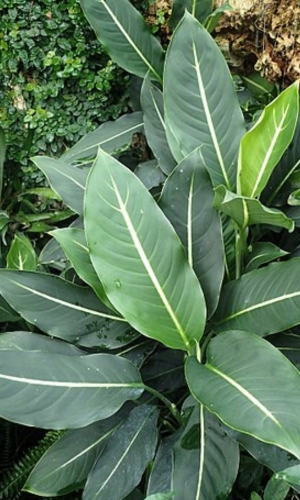
This particular variety of Dieffenbachia is genuinely stunning. It features luscious dark green leaves with a striking creamish-white midrib that runs down the centre of each leaf. The elongated shape of the leaves adds to the plant's overall charm, making it a captivating addition to any space. Dieffenbachia Green Magic is perfect for adding a touch of elegance to indoor spaces, thriving in low to medium light conditions. Easy to care for, 'Green Magic' requires minimal watering and occasional pruning, making it an ideal choice for novice and experienced plant enthusiasts.
-
Dieffenbachia Triumph
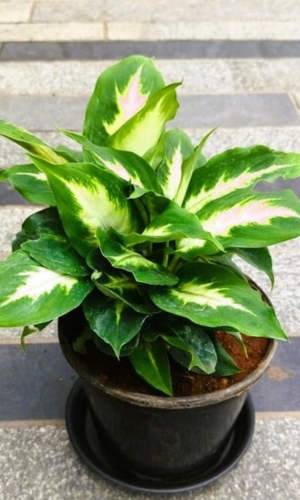
Dieffenbachia Triumph is known for its bright and bold foliage. This variety features large, glossy leaves with a striking flame-like pattern of creamy yellow or white in the centre, around which the leaf is bright green. The leaf veins are often darker, adding depth and character to the plant's overall appearance. Dieffenbachia Triumph is an excellent choice for an eye-catching houseplant to brighten a room.
-
Dieffenbachia Sterling
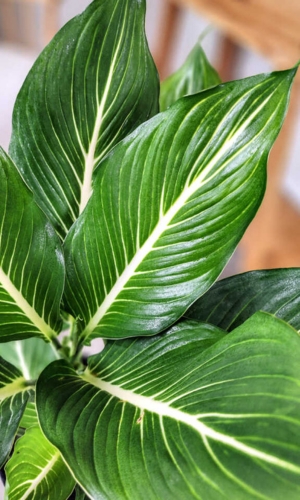
This variety of the Dieffenbachia family is the literal star of the show with its sparkly appearance and stunning shade of green. The plant leaves are large, with a deep set green and silvery-white central vein that almost looks like it is glowing. Further adding to the lustre of the plant are the gorgeous side veins that look hand-painted with the utmost precision and delicacy. The whole arrangement gives the plant a sophisticated feel and can easily become a conversation starter for your relatives and friends.
General Care Tips for Dieffenbachia Plants
Regardless of the variety you choose, there are a few general care tips that apply to all Dieffenbachia plants:
-
Lighting:
Dieffenbachia plants prefer bright, indirect light but can adapt to lower light levels. Avoid direct sunlight, which can scorch the leaves. -
Watering:
Water your Dieffenbachia when the top inch of the soil feels dry. Be careful not to overwater, as this can lead to root rot. -
Temperature and Humidity:
These plants thrive in warm, humid environments. Aim for temperatures between 60-75°F (16-24°C) and keep them away from cold drafts or hot, dry air. -
Fertilising:
To encourage healthy growth, feed your Dieffenbachia with a balanced, water-soluble fertiliser once a month during the growing season (spring and summer). -
Pruning:
Trim any yellowing or damaged leaves to keep the plant looking neat and healthy. Pruning can also encourage bushier growth.
.
Conclusion: Choosing the Right Dieffenbachia for Your Home Garden
Dieffenbachia plants are an excellent addition to any home garden, thanks to their beautiful foliage and easy care requirements. Whether you prefer the classic look of Dieffenbachia seguine, the compact size of Dieffenbachia Compacta, or the unique appeal of varieties like Triumph, Star Bright, Green Magic, or Sterling, there's a Dieffenbachia for every style and space. By following the care tips provided, you'll be well on your way to enjoying a thriving, vibrant Dieffenbachia plant in your home.
Happy gardening!
.
Note: Dieffenbachia plants can irritate if ingested. Keep them out of reach of pets and small children.


